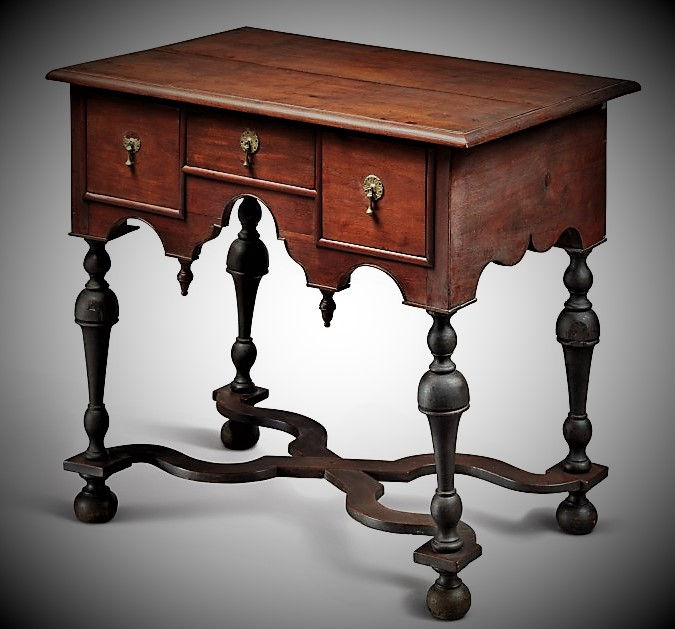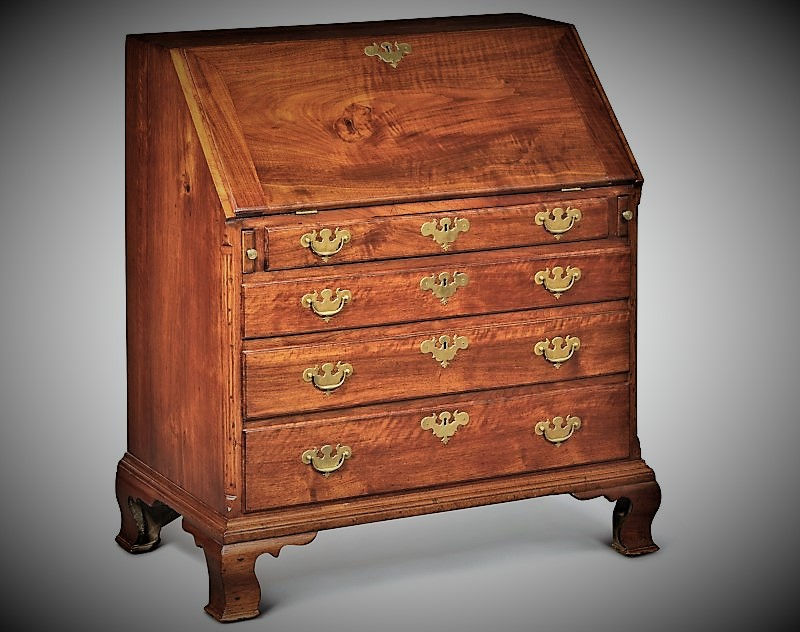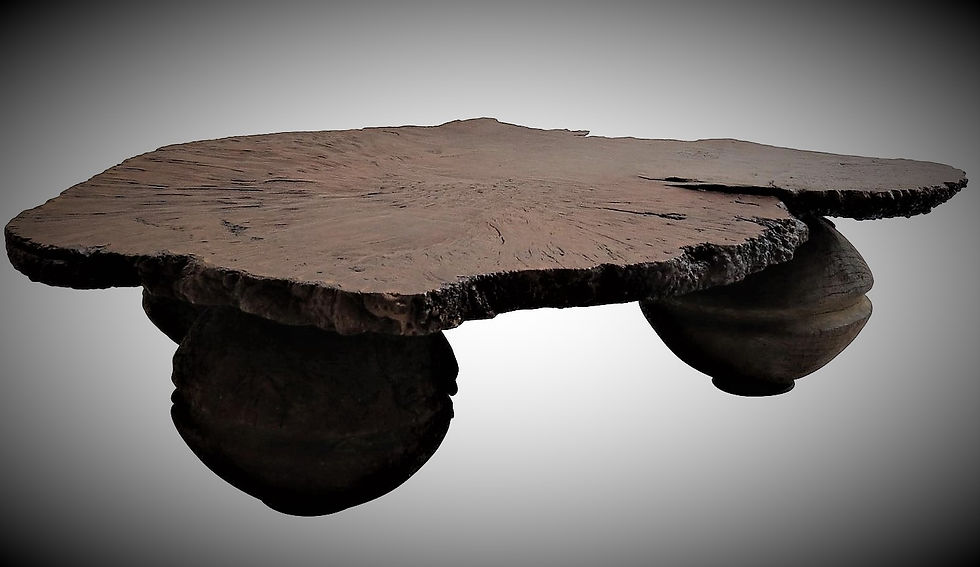Four scores and seven auctions ago, my father hooked me in to going to an auction with him. There, he was excited to find an old, water damaged, animal chewed, antique corner cupboard. It was walnut, so he said, it was most likely Mid Atlantic and of the Federal Period. Boy was I impressed….not ! It meant he wanted to stay and bid, which to me meant we’d be there for hours. And to make matters predictably worse, if he won it, I’d be tying it to the roof of the Station Wagon at mid-night on a school night, in about 20 degrees. Score! Well he won it and it went into the barn with other projects around 2AM that night.
Fast forward 10 or 15 years, I can’t remember, but I do know, I was sitting in an Auction School in Reading Pennsylvania. This is when I learned, maybe I should have paid more attention to Dad. Here, one of the subjects, and sure to be on the test, was a "required" understanding of the Periods of Furniture. To me, it felt like it as going to be learning the chemical elements of the periodic chart all over again…. very gaseous. But I did survive it and here I am now to drop it all on you!
Let us begin with the turn of the 17th Century….
William and Mary 1690-1730
This style furniture was popular in the late 17th and early 18th century and was characterized by its Dutch and Chinese influences. Named for English King William of Orange and his consort (a fancy name for a wife, husband, or companion, in particular the spouse of a reigning monarch) Mary. Examples bear a classic examples of trumpet turned legs, many have a Spanish ball feet and Oriental lacquer work, known a Japanning. (A type of finish that originated in European to imitate Asian lacquer-work.)
Queen Anne 1720-1760
This style furniture emerged during the reign of William III (England.) It is characterized by cabriole legs, pad or drake feet, fiddle-backed chairs, and bat-wing stylized drawer pulls.

Louis XVI 1760–1789
Designed for Marie Antoinette during the French Revolution and was heavily inspired by Neoclassical design. Louis XVI furniture is generally characterized by its Greco-Roman influence, straight lines, classical motifs and richly carved details.
Chippendale 1755-1790
The period named after the famed English cabinetmaker, Thomas Chippendale, can be classified by its Gothic, French, and Chinese influences as well as the Queen Anne style. Chippendale furniture is often characterized by its cabriole legs, ball and claw feet, and broken pediment scroll top on tall cases. Think of having a gap at the apex or top.
Sheraton 1790-1810
After English designer George Sheraton, this period is characterized by what some call “severe simplicity” and straight lines with contrasting veneers, and tapered legs. Fancy, yet simple.
(continued below....)
Federal (Hepplewhite) 1790-1815
Generally, was a combination of the Hepplewhite and Sheraton styles. Known for its handsome straight lines, contrasting veneers, neoclassical motifs, and ornamentation. Hepplewhite furniture, after its namesake, London designer George Hepplewhite, was popular in the United States during this period. Its characterized by its neoclassical influence, more delicate appearance, tapered legs, and contrasting inlaid veneers.
Empire (Classical) 1805-1830
French-inspired furniture style that was popular in the US during the late 19th century. It is known for blending classical ornamentation (Greece, Egypt and other ancient European influences) course carvings, and dark finish.
Victorian, 1830-1890
Named after Queen Victoria, this was the furniture style of the English Victorian period. Springing from the industrial revolution, Victorian furniture was the first style to be truly manufactured. Characterized by a Romantic influence, heavy proportions, dark finish, and typically an elaborate ornamentation.
The Gothic Revival 1840-1860
This is relatively easy to identify. It is one of the few styles that has all the elements found in Gothic Style architectural themes, such as turrets, pointed arches and quatrefoils. (A decorative element that consisting of symmetrical shapes, forming the outline of four overlapping circles. I think of a four leaf clover.) Really, all the designs found in 12th through 16th centuries, were adapted to this mid-19th century furniture style.
Rococo Revival 1845-1870
Featured carved decorations in the form of scallop shells, leaves and flowers. In particularly roses and acanthus. Legs and feet are cabriole or scrolling, generally. It’s often difficult to find a straight element in Rococo Revival furniture.
Naturalistic 1850-1914
Took the scrolling effects of the Rococo Revival design and added more flowers and fruits. Much more detail was spent on the leaves. Technological advances enhanced this design style.
Eastlake 1870-1890
Named for Charles Locke Eastlake, who wrote of the principle relationship between function, form and craftsmanship. Furniture of this style tends to be more rectangular. Ornamentation features the use of brackets, grooves, chamfers and geometric designs. (In carpentry, a chamfer is a cut away, typically a right-angled edge or corner, that makes a symmetrical sloping edge. I think of fancy molding.)
Arts & Crafts 1895-1915
Arts and Crafts was the style of a movement, which sought to return to the craftsmanship of the pre-industrial period. Arts and Crafts furniture is characterized by it's simple, utilitarian design. Think of Stickley Brothers, Elbert Hubbard, Frank Lloyd Wright and Harvey Ellis. The furniture designs often overlapped into architectural and interior design during this period. Rugs, textiles and other accessories, all reflected this movement. The wood used for most Arts & Crafts furniture was and is oak.
Art Nouveau 1896-1914
Not as popular in America, as its production was not very conducive to mass production, with its free-flowing design, floral motifs and curves. It was much more popular in France, but a few pieces made their way to the US.
Art Deco 1920-1945
The furniture of this period featured a design excess. Think, "Is this too much." and the Great Gatsby. Originating in France just before WWI, Art Deco furniture was defined by its bold, vibrant colors, geometric shapes, and metal surfaces. Here is where the cocktail table makes its first appearance !
Modernism or Modern 1940-present
This period was and is distinctive and featured what were “new materials,” as far as furniture was concerned. Plastic, aluminum and laminates. A subset of Modern is Scandinavian Contemporary. Popular and came out of this period as well. Today, it is characterized by its functionality, minimalism, and simplicity. Typically utilitarian in its design made with natural woods.
I hope this helps in some way and I may make a YouTube Video out of this subject at some point. It would be wonderful if The Winterthur Museum would let me run amok with my iPhone for a few hours for some great visuals. If you are interested and like me, “use the google” and look at lots and lots of pictures of each. Learn their legs, the woods used in each period, their feet, their hardware designs, carvings and look for the “tell” of the period. I found that each period has that one particular thing that will resonate with you. Fortunately for you, today, there are so many great sites and free online tools out there. You still can’t beat having a pocket field guide and I was surprised how many are still in print. I have yet to find a furniture ID App yet, but I should probably invent one. It would make it a lot easier for the folks in the business. That’s for sure. Until next time….
---------------------------------------------------------
LINKS TO STALK / FOLLOW JOSH
SUBSCRIBE to My YOUTUBE Channel: https://bit.ly/2PgAEPJ
Buy My Book: https://amzn.to/31rOpzc
Follow me on INSTAGRAM: https://www.instagram.com/joshlevinespeaks
Like me FACEBOOK page: https://www.facebook.com/joshlevinespeaks
Follow Me on PINTEREST - https://www.pinterest.com/jlevines1/
Follow Me on TUMBLR - https://joshlevinespeaks.tumblr.com/
My YouTube Secret Sauce: https://vidiq.com/#_l_2zu
Please Note: copyright of photos are with respective owners, no copyright infringement intended

















Thank Bob, perhaps I will drill down more as I was vague with mid century too and was going to do a special focusing on that....Swedish, Norwegian, Italian Industrial and Hollywood regency. All the revivals would be excellent too. Thanks for the inspiration. They all come around again and again too.
Great short write-up, but you didn't mention Renaissance or its Revival (which are plentiful at auctions these days), Louis XIV, XV, etc. Also many of these styles such as Gothic Revival continued to be produced even into the early 20th Century, and not just during the date range of 1840-1860. What do you call a 17th Century Gothic coffer? Is that "Late Gothic" or is it true Gothic, or Gothic Revival? Just curious of your take on things like that. And what is Hollywood Regency? I've been seeing that quite a bit lately. Thanks Josh, as always your insights are helpful.